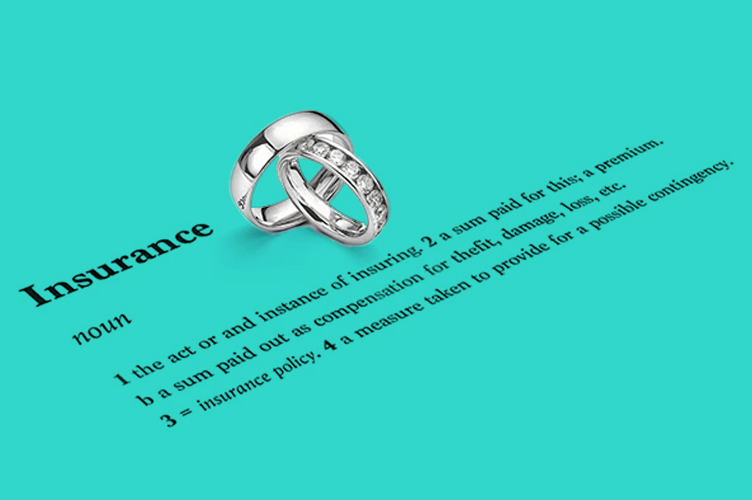What is a Deductible in Insurance?
Deductibles are a cost-sharing element of insurance policies that determine the amount policyholders must pay out of pocket before insurance coverage takes effect.
Deductibles can help lower premiums and encourage responsible insurance usage; however, the upfront payment can prevent some policyholders from receiving covered services, especially in the event of a high-dollar claim.
While most insurance, such as health and homeowners policies, do feature high deductibles, other types of insurance, like jewelry insurance, offer zero-deductible plans for risk-free coverage.
Understanding how deductibles work in the insurance industry can help you choose the right plan for your fine jewelry.
What You Will Learn
What Does a Deductible in Insurance Mean?
An insurance deductible is a set cost you must pay out of pocket before your insurance company starts paying for covered services. It is a cost-sharing approach to various types of insurance, such as health, auto, or homeowners insurance, that encourages policy owners to take on part of the financial risk of coverage. The term “deductible” basically means the amount you “deduct” from your own money, before your insurance company steps in to help cover the rest of a covered cost.
Typically, an insurance plan will enforce an initial, yearly deductible amount you’re responsible for. Once you pay for covered items up to that deductible amount, the insurance provider covers any additional expenses for the rest of the coverage period.
How Do Deductibles Work?
For some policies, like auto and homeowners insurance policies, you may have a straightforward, out-of-pocket maximum deductible amount that applies to all claims on your policy.
Alternatively, you may have a family-wide deductible for other insurance coverage, such as health insurance. This means the health insurance deductible applies to all members of the family covered under the policy. Once the total expenses incurred by all family members reach the family deductible threshold, the insurance pays for all covered healthcare expenses from that point.
You may also have policies with separate deductibles for different types of losses. For example, you might have separate deductibles for various healthcare services such as dental treatments, prescription drugs, or mental health services.
For homeowners insurance, you may have separate deductibles for storm damage versus stolen items like jewelry. If you have separate deductibles, you must meet each deductible threshold independently, before insurance coverage takes effect for that category of services or expenses.
To better understand how deductibles work, consider the following examples.
- Health Insurance
Say your health insurance plan includes a $1,000 deductible. Due to an injury, you incur $3,000 in covered medical expenses. Under the plan, you’ll have to pay $1,000 out of pocket before your insurance covers their portion of the remaining healthcare costs (or $2,000 of the total bill).
- Homeowners Insurance
Say your homeowners insurance policy includes a $1,000 deductible, and you experience $2,500 in damage due to a leak. You must pay the initial $1,000, and then the insurance company pays the rest, up to the policy’s limits.
- Auto Insurance
Say your car insurance policy includes a $500 deductible. If you were involved in an accident that caused $1,500 worth of damage to your car, you would be responsible for paying the first $500 out of pocket. Once you pay the deductible, your car insurance coverage will kick in, and the insurance company will cover the remaining $1,000 to repair your car under policy limits.
How Do Deductibles Affect Premiums?
Deductible amounts can vary based on the type of insurance and your selected coverage level. When selecting insurance, you may have flexibility regarding your deductible, as you can often choose between high versus low-deductible plan options.
Higher deductibles often mean lower premiums (or monthly or annual payments), making them a good choice if you want to reduce your monthly insurance costs. Lower deductibles lead to higher premiums, but can provide more accessible coverage for covered claims.
For example, a high-deductible health plan might require only $100 per month in premiums, but the deductible is $3,000, meaning you must cover the first $3,000 of covered healthcare services out of pocket, before the insurance starts covering your costs.
Alternatively, you could choose a low-deductible health plan with a $300 monthly premium and a deductible of $500. You would only need to pay $500 before the insurance kicks in, in the event of an incident that requires insurance use, but you would pay more each month.
Does Homeowners Insurance Charge a Deductible for Jewelry Claims?
If you want insurance coverage for your fine jewelry, such as a luxury watch, diamond engagement ring, or family heirloom, you may consider using your homeowners policy for protection. However, while homeowners insurance may providehttps://brite.co/blog/what-is-heirloom-jewelry/ some coverage for jewelry, it often features a low coverage limit and may require you to meet a deductible before covering your items.
For example, standard homeowners policies only cover damage to jewelry due to perils covered in your policy, such as windstorms, fires, vandalism, or theft. Additionally, they may only cover up to about $1,500, which may not come close to covering the cost of replacing your high-dollar items.
The average deductible for homeowners insurance is usually between $500 and $2,000, but it can also be about 2% of the value of your home. This means you may have to pay a significant amount to meet your deductible, before the policy pays the remainder under its limit to cover your jewelry.
Say you have a policy with a $500 deductible and an engagement ring worth $7,000, and it’s stolen. The policy would only pay up to $1,500 of the ring’s $7,000 worth, but before you even get that $1,500, you may have to pay $500 upfront.
Can You Get Deductible-Free Jewelry Insurance?
Specialty jewelry insurance can help you get comprehensive coverage without worrying about limits or deductibles. At BriteCo, we offer no-deductible jewelry insurance covering your important pieces at up to 125% of their replacement value.
Our plans are affordable, with worldwide coverage for:
- Loss
- Damage
- Theft
- Mysterious disappearance
Plus, with BriteCo, you can expect a seamless claims process if the worst happens, without worrying about coming up with a deductible payment to replace or repair your jewelry.
Don’t let deductibles hold you back from protecting your precious jewelry. Get a quote today.
FAQs:
What is the difference between a deductible, premium, and copay?
Deductibles, premiums, and copays have different functions within an insurance policy. A deductible is the amount you must pay out of pocket before your insurance coverage starts. A premium is a monthly, quarterly, or annual payment you make to maintain your insurance coverage. A copay is a fixed amount paid when receiving a covered service, for instance, a $20 copay for a doctor’s visit.
How does a deductible affect insurance premiums?
Generally, higher deductibles result in reduced insurance premiums, while lower deductibles result in higher premiums. Choosing a higher deductible can be a way to reduce monthly insurance costs, but it also means you’ll need to pay more out of pocket before coverage kicks in.
Are all types of insurance policies subject to deductibles?
No, not all insurance policies have deductibles. Some policies, such as specialty insurance, may not require deductibles. However, most common types of insurance, like health, auto, and homeowners, typically have deductibles.
Can I choose my deductible amount?
In many cases, yes. Insurance providers often offer deductible options to policyholders. You can usually select a deductible amount that matches your budget and risk tolerance. However, some insurance policies may have fixed deductibles that cannot be changed.
Is there a deductible for jewelry insurance?
Deductibles may vary depending on the policy and provider. However, specialty jewelry insurance providers like BriteCo often offer deductible-free plans for comprehensive coverage, without any upfront deductible payments for claims related to your valuable jewelry.
Also Check:
David Yurman Jewelry Insurance | BriteCo Jewelry Insurance
Piaget Jewelry Insurance | BriteCo Jewelry Insurance
Jeweler’s guide to insurance payment suspensions by state











